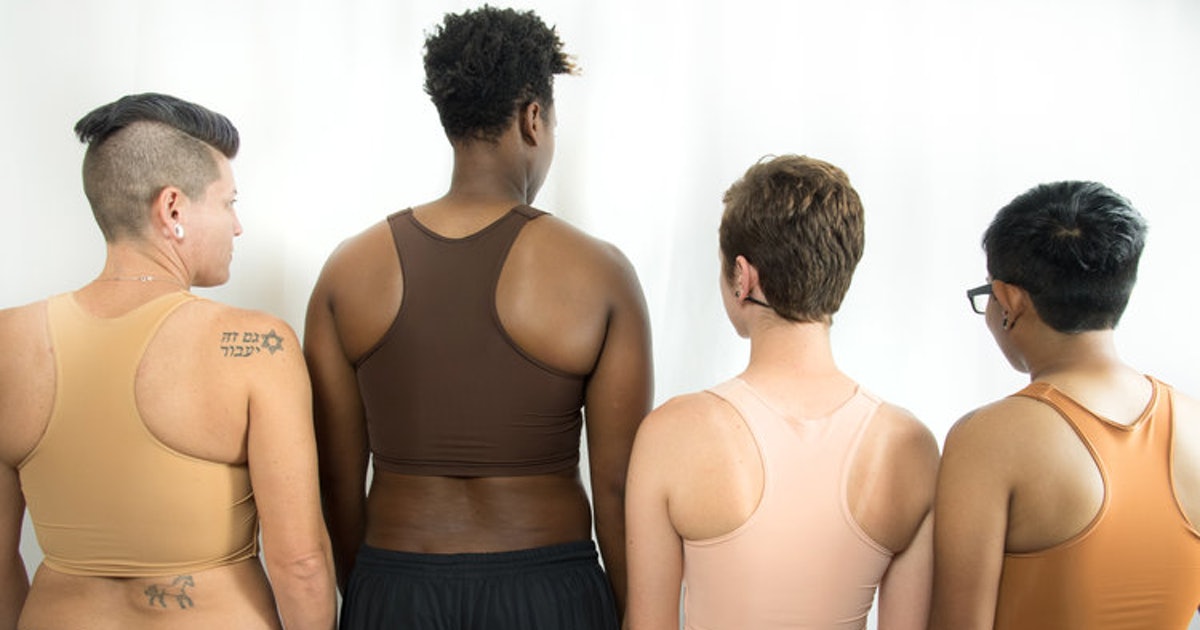Imagine this. You are sleeping over at a friend’s house, and you forgot your sports bra, so you have to sleep in your binder. Or you had a long day, and by the time you are getting home, you are too tired even to remove the binder, so you sleep in it. How safe is it? What happens if you sleep in a binder?
It’s dangerous to sleep with your chest binder regardless of where you are or how tight or loose it is. As you know, chest binders work by compressing the body tissue, and this can affect your breathing.
When you are sleeping, your breathing is shallow, and it’s even shallower with the binder on. This puts you at the risk of suffering from obstructive sleep apnea. Other people have reported being fatigued and sore the following morning.
While you might get away with sleeping with the binder once or twice, if you do it for a long time, you risk damaging your ribs and disrupting your sleep patterns. You also open a gateway to other medical conditions such as irregular heartbeats, high blood pressure, and even ADHD.
What Happens If You Sleep In A Binder?

What if the dysphoria is over the roof?
The principal reason you wear the chest binder is gender dysphoria, and some people have reported serious panic attacks when they have to take off their binders in public.
If you are camping or sleeping over at a friend’s house and your dysphoria is so bad, you surely should have some compression when sleeping. But avoid sleeping in the chest binder and instead, use a properly fitting sports bra. Although the sports bra still has its dangers because of the compression issue, it’s much better and safer than sleeping in a binder. If you don’t have a sports bra, get a t-shirt.
If you must wear a binder, wear a loose one or get one with zippers that you can unzip when sleeping.
It’s possible to cope with body dysphoria without compromising your health.
Although body dysphoria is challenging to cope with, there are several ways you can bind your breasts without putting your health and life on the line. Like any other shapewear, approach binding with respect for your body and well-being. To help you out, here are tips to consider when binding:
Ace bandages belong in the movies.
Ace bandages are popular with badass movie actors, but they belong there—in the movies. Don’t use them in real life as they aren’t designed to move with your body, and they can lead to serious conditions such as rib bruising, spine misshaping, and lung damage.
Don’t use duct tape
When you don’t have access to professional binders, duct tape seems like an awesome option, but it’s not. Tapes are non-breathable and can lead to ripping, scarring skin, and other serious medical conditions.
Don’t over bind
As much as you want the flat look, avoid over binding your breasts as you risk aches and back pain. A good rule of thumb is to bind your breasts for 6-8 hours. Anything more than this is overkill.
Wear the right fit
If wearing a commercial binder, take time to find the right size. A great way to do it is to read the customer reviews to get a sense of the sizing accuracy.
While it might seem logical to go for a tight binder to flatten your breasts as much as possible, don’t do it as it has been shown to cause pain, cuts and breath restriction. Remember, the purpose of FTM binder compression is to give you a masculine shaped torso, not to crush your ribcage.
An ideal binder should allow you to breath normally. It also should allow air circulation, so you should go for a breathable fabric. Avoid any material that makes you sweat as it provides a perfect environment for fungal infections and skin rashes.
Bind less if planning to have top surgery
If planning to have top surgery in the near future, reduce the binding frequency. This is because binding has been shown to reduce the skin’s elasticity. Some FtM researchers feel that long-term use of breast binders reduces the skin’s quality, leading to complications during surgery.
Stretch for the blood to flow
It’s common to experience some tension when wearing the binder. To get rid of the aches, stretch your body. The beauty is you don’t need to be fancy about it. Simply stretch your arms over your head or give yourself a little chair twist.
If your schedule allows it, spare time for a full-body stretch.
See Also: Top 7 Best Pre-Workout Foods For Instant Energy
Watch your posture
Binding can sometimes affect your posture. Most people unconsciously hunch and shift to counter the binder’s discomfort, and this can lead to rounded shoulders and curved spines.
Now and then, check whether you are hunched over. Remember, hunching can cause nerve compression, so correct the hunching immediately. Keep your shoulders back, down, and stack your head and neck on top of each other in a straight line.
Don’t bind while working out.
Binding while working out is synonymous with binding while sleeping—you put your life at significant risk. Binding while working out can cause shortness of breath, which is treacherous if suffering from asthma as it puts you at increased risk of developing an asthmatic attack.
Binding also restricts your movement and affects your posture, both of which are fatal when in the gym. The restricted movement prevents you from completing your sets in proper form, while the poor posture increases your chances of getting injured.
If you have panic attacks being in public without a binder, buy a few weights and exercise at home. If you don’t have money for weights, there are plenty of bodyweight exercises you can do at home.
Binding isn’t 100% safe.
Although you can minimize the risks of binding, the practice isn’t foolproof as our bodies aren’t meant for long term binder compression. For safer binding, follow the above tips and buy a properly sized breast binder. If you experience any discomfort, such as backaches for extended periods, see a doctor.
Post You May Also Like




